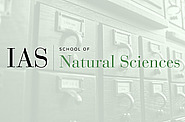Joint IAS Princeton University Astrophysics Colloquium
Sep
16
2025
Institute for Advanced Study / Princeton University Joint Astrophysics Colloquium
Finding Wakes in Supernovae
Lars Bildsten
11:00am|Wolfensohn Hall
Sep
09
2025
Institute for Advanced Study / Princeton University Joint Astrophysics Colloquium
Discovering, Weighing, and Characterizing Giant Exoplanets and Brown Dwarfs
Tim Brandt
11:00am|Wolfensohn Hall
Apr
29
2025
Institute for Advanced Study / Princeton University Joint Astrophysics Colloquium
The Dragonfly Project: From Diffuse Galaxies to the Cosmic Web
Pieter van Dokkum
11:00am|Peyton Hall, Auditorium, Princeton University
Apr
22
2025
Institute for Advanced Study / Princeton University Joint Astrophysics Colloquium
Unveiling Hot Gas Kinematics in Galaxy Clusters with XRISM: Stormy Weather, Multiple Cascades, and Calm Outskirts
Irina Zhuravleva
11:00am|Peyton Hall, Auditorium, Princeton University
Apr
15
2025
Institute for Advanced Study / Princeton University Joint Astrophysics Colloquium
Decoding the cosmos
Hiranya Peiris
11:00am|Peyton Hall, Auditorium, Princeton University
Apr
08
2025
Institute for Advanced Study / Princeton University Joint Astrophysics Colloquium
New frontiers in transient astrophysics: gravitational-wave multi-messenger sources and r-process nucleosynthesis
Enrico Ramirez-Ruiz
11:00am|Peyton Hall, Auditorium, Princeton University
Apr
01
2025
Institute for Advanced Study / Princeton University Joint Astrophysics Colloquium
LCDM, Tensions, and the Atacama Cosmology Telescope
Suzanne Staggs
11:00am|Peyton Hall, Auditorium, Princeton University
Mar
25
2025
Institute for Advanced Study / Princeton University Joint Astrophysics Colloquium
Learnings about, and from, fast radio bursts
Vikram Ravi
11:00am|Peyton Hall, Auditorium, Princeton University
Mar
18
2025
Institute for Advanced Study / Princeton University Joint Astrophysics Colloquium
The Gaia binary star revolution
Kareem El-Badry
11:00am|Peyton Hall, Auditorium, Princeton University
Mar
04
2025
Institute for Advanced Study / Princeton University Joint Astrophysics Colloquium
Is machine learning good or bad for astrophysics?
David Hogg
11:00am|Peyton Hall, Auditorium, Princeton University
